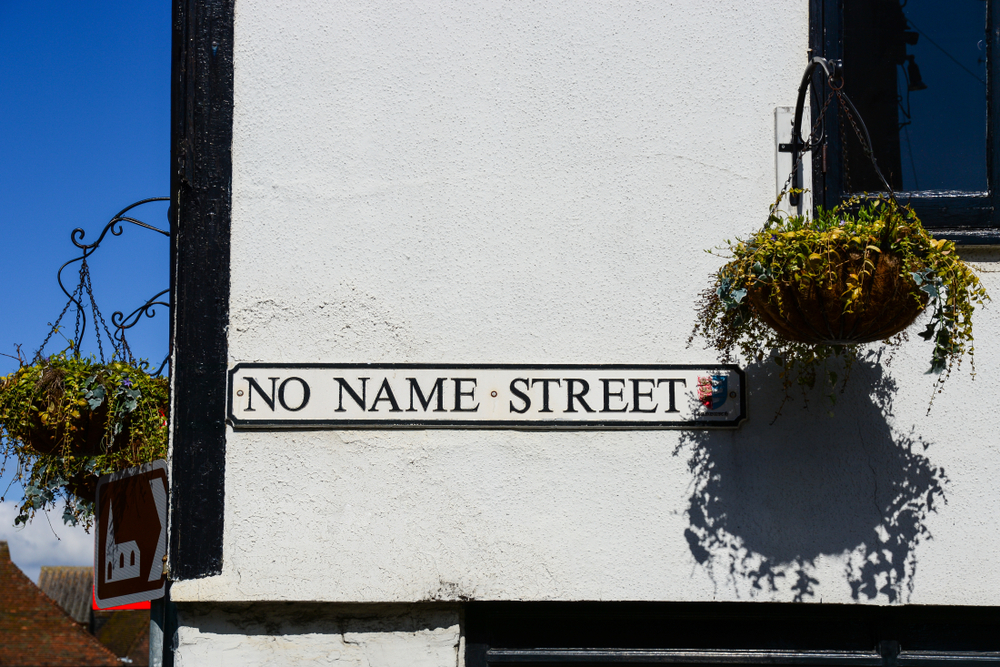|
How Will The Spring Statement Impact UK Property, Plus More
In this month's edition, we discuss what the spring statement means for the UK property market and figures are showing that the monthly cost of a mortgage has reached a ten year low.
Also this month, communities are set to have more of an input in how their neigbourhood develops and we reveal five unusual factors that can affect house prices.
The Spring Statement: What It Means For The UK Property Market

In the recent Spring Statement, Chancellor of the Exchequer – Phillip Hammond – outlined the country’s plans for the property market in the next year.
While there was not a long list of new developments and announcements from the Government on the UK property market, there were at least a few key points worth noting, along with reaffirming plans outlined in previous statements.
It was announced in the Autumn budget 2017 that a Government investment programme would inject £44 billion over the course of 5 years with the hope that they would be able to provide 300,000 new homes by the mid-2020s.
The Spring Statement 2018 provided more detail on how the Government plans to deliver on their targets.
It details that the Government is working with 44 areas throughout the UK to help support their bids for the £4.1 billion Housing Infrastructure Fund which will help to build the homes that the country needs.
It also states that they will double their support for the Housing Growth Partnership, a social impact investor set up to help small builders and developers, who will receive £220 million.
London is set to receive significant funding, as the Government plans to inject £1.67 billion into the capital to help build 27,000 affordable homes by the end of 2021/22.
The Spring Statement also gave mention to the progress made since the removal of stamp duty for first-time buyers, detailing that approximately 60,000 buyers have benefitted so far.
Many experts within the property industry have offered their opinions on the recent announcements, with a belief that these are positive signs, but more work will be required to completely solve the affordability problem.
Simon Heawood, CEO of property investment platform, Bricklane, spoke on the Spring announcement, stating: “The recent cut to stamp duty and building announcements are welcome for those lucky enough to be able to buy. We would like to see more done to help those saving to get on the ladder, as well as moves to further professionalise the rental market for tenants.”
Some experts feel that the abolishment of stamp duty for first-time buyers should also be relevant for those who are “further up the ladder”. This sentiment was shared by Shaun Church, Director of Private Finance, who expressed that this type of ‘activity’ should be seen at ‘all levels’, as it is ‘vital’ to solving the affordability problem.
Church said “…the prohibitively high cost of moving is continuing to dampen activity at the upper end of the property market. While this might not seem like a problem for ordinary buyers, a healthy market requires plenty of movement at all rungs of the ladder. A blockage at the top will have a trickle-down effect, as those who want to upsize may struggle to find any properties available, which will, in turn, impact those further down the chain.”
Also this Month:
Communities To Have More Input In The Planning Of Their Neighbourhood

New government funding has been introduced to several communities throughout the country to give people the opportunity to have some input towards the development of their local area.
£23 million will be provided to help communities gain access to the expert advice from planning professionals along with guidance and financial support that will allow them to shape their neighbourhood.
This fund will give people a say on the location and design of many aspects of their local area such as homes, businesses and schools, helping develop the vision for their area.
Already off to a strong start, over 2,300 communities in England have begun the process of neighbourhood planning and 530 plans have already been approved in local referendums.
Previous similar Government support schemes have seen success, as 365 neighbourhood plans were finalised, meaning approximately 70% of communities saw progress due to Government support.
Originally, the maximum grant that was available to communities was £15,000. However, the latest fund has increased this to £17,000, giving them more access to resources that will further help the progress of the plans for their area.
Housing Minister Dominic Raab spoke about the recent announcement for the £23 million fund, highlighting the importance of communities having an input in their area and providing them with the support that is needed to do so.
Raab said; “Neighbourhood plans are a powerful tool to help communities shape their local area, making sure the right homes are built in the right places.
“It’s vital that communities have the right support and advice available to help deliver a plan that meets their own ambitious aspirations. That’s why I’m making £23M available that will help more groups to do this.”
Also this Month:
Mortgage Affordability Is At A Ten Year Low

New research has found that mortgage payments account for less than a third of a homeowner’s disposable income, with mortgages reaching their most affordable level since 2007.
The recent research from Halifax has shown that during the fourth quarter of 2017, the average mortgage payments in the UK accounted for 29% of the owner’s disposable income.
When the same statistic was recorded in 2007, monthly mortgage payments took up 48% of disposable income, meaning there has been a 40% fall in mortgage affordability levels for home buyers since the peak seen in 2007.
According to Halifax, record low mortgage rates are responsible for the improving affordability levels as average rates dropped from 2.09% to 1.98% across last year.
With house prices rising recently by an average of 3%, affordability was still improving at the tail end of 2017.
Just under 75% of all the districts included in the study recorded an improvement in affordability of at least 15% over the last 10 years and 35 districts saw mortgage payments fall by at least 30% over the same period.
As a result of the considerable fall in house prices, Northern Ireland saw the greatest improvements in affordability, currently standing 44% lower than 2007.
Within the UK, the North West and Scotland had the most frequently listed areas in the top 10 most affordable places to live, with the South East and London dominating the other end of the table.
The research found that Brent and Haringey were the least affordable places to live, with mortgage payments taking up 61% of disposable income on average. At the other end of the spectrum, the findings showed a considerable difference when compared to such areas as Copeland, Cumbria, where only 15% of disposable income is used for mortgage repayments.
Mortgage Director at Halifax, Andy Bickers, commented on their findings, saying that whether you’re a first-time buyer or already a homeowner, these latest statistics are good news “This is a real boost for both those who already have a mortgage and those preparing to take their first step on to the property ladder. Improved mortgage affordability has been a key factor supporting housing demand and helping to stimulate the modest recovery that we are currently seeing.”
"In recent months we have seen the number of first-time buyers and homemovers purchasing a home with a mortgage bounce back towards 2007 levels, and mortgage payments becoming a much smaller proportion of disposable income across most of the country will also support a healthy market with more choice and opportunity for buyers/borrowers.”
Data collected by Pygott & Crone shows that the number of new mortgages were at their highest during the summer months, with a 10% increase in the number of approvals. If you are looking to take advantage of the mortgage market's current affordability, it could be worth making some enquiries now.
Also this Month:
Five Unusual Factors That Affect House Prices

It is common to spend the weeks and months prior to placing your property on the market trying to get the house up to a suitable standard so that you can add as much value as possible.
You might have cleaned all of the carpets – multiple times – given a few rooms a new coat of paint and even fixed those broken slabs of pavement on the driveway, but whilst all of these repairs and refurbishments can help you get the most out of your property, there are some other factors that come into play when selling your home –
and some of them can be quite unusual.
Street name: The name of the street can have more of an impact than you realise. Research suggests that ‘boulevard’ and ‘avenue’ will generally sell at a higher price than a home located on a ‘street’, ‘court’ or ‘terrace’. This effect can also work in reverse, with homes that are unfortunately located on streets with names that could be considered rude or quirky, as buyers may feel embarrassed investing in ‘Crotch Crescent’.
Trees: Buyers are prepared to pay more for a property with trees nearby due to the privacy and reduction in noise that they offer. Removing trees from near your property could see you lose 5% of the value of your property.
House number: Some studies have shown that a property with an even number can fetch a few extra hundred pounds than a property with an odd number. Unsurprisingly, the number 13 can also play a part in affecting the value of the property. Although some would consider it to be silly superstition, triskaidekaphobia (the fear of the number 13) is not uncommon in the property market. Some streets completely exclude the number 13, out of fear that it will affect the value, and there is even research to suggest that people avoid buying a home on the 13th day of the month.
The closest supermarket: It’s always great to have a home that is close to plenty of shops that allow you to pick up all of your amenities. You may be surprised to find out that the shop in which you are closest to can influence the price of your home. According to research performed by Lloyds Bank, houses closer to a Waitrose can see a rise in value of £40,000, whilst properties near a Tesco can see property values rise by £22,000. At the other end of the scale, a property near an Aldi could see their prices rise by £1,300.
Waterways: Research performed by the Canal & River Trust found that homes near to a canal or river saw their values boosted by 15-25%. The local economy also receives a boost from waterways due to the types of businesses that tend to open near them.
Also this Month:
<< News
|
|